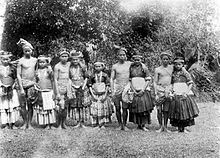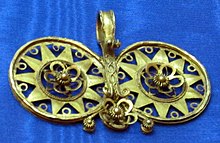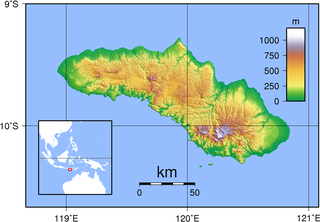
Sumba, previously Soemba, is an island in eastern Indonesia. It is one of the Lesser Sunda Islands and is in the province of East Nusa Tenggara. Sumba has an area of 11,006.62 square kilometres, and the population was 779,049 at the 2020 Census; the official estimate as of mid-2021 was 788,190. To the northwest of Sumba is Sumbawa, to the northeast, across the Sumba Strait, is Flores, to the east, across the Savu Sea, is Timor, and to the south, across part of the Indian Ocean, is Australia. It is likely that its name is shared with Sumbawa, which is probably derived from Sanskrit śāmbhawa, meaning 'related to Śambhu '.

Central Sulawesi is a province of Indonesia located at the centre of the island of Sulawesi. The administrative capital and largest city is located in Palu. The 2010 census recorded a population of 2,635,009 for the province, and the 2020 Census recorded 2,985,734, of whom 1,534,706 were male and 1,451,028 were female. The official estimate as at mid 2022 was 3,066,143. Central Sulawesi has an area of 61,605.72 km2 (23,786 sq mi), the largest area among all provinces on Sulawesi Island, and has the second-largest population on Sulawesi Island after the province of South Sulawesi. It is bordered by the provinces of Gorontalo to the north, West Sulawesi, South Sulawesi and South East Sulawesi to the south, by Maluku to the east, and by the Makassar Strait to the west. The province is inhabited by many ethnic groups, such as the Kaili, Tolitoli, etc. The official language of the province is Indonesian, which is used for official purposes and inter-ethnic communication, while there are several indigenous language spoken by the Indigenous peoples of Central Sulawesi. Islam is the dominant religion in the province, followed by Christianity which is mostly adhered to by the people in the eastern part of the province.
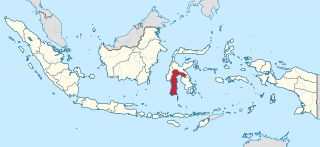
South Sulawesi is a province in the southern peninsula of Sulawesi. The Selayar Islands archipelago to the south of Sulawesi is also part of the province. The capital is Makassar. The province is bordered by Central Sulawesi and West Sulawesi to the north, the Gulf of Bone and Southeast Sulawesi to the east, Makassar Strait to the west, and Flores Sea to the south.

Nusantara is the Indonesian name of Maritime Southeast Asia. It is an Old Javanese term that literally means "outer islands". In Indonesia, it is generally taken to mean the Indonesian Archipelago. Outside of Indonesia, the term has been adopted to refer the Malay Archipelago.
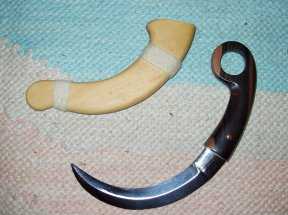
The karambit or kerambit, kurambik or karambiak is a small Indonesian curved knife resembling a claw from the Minangkabau people of West Sumatra. The karambit is one of the weapons commonly used in pencak silat and Filipino martial arts.
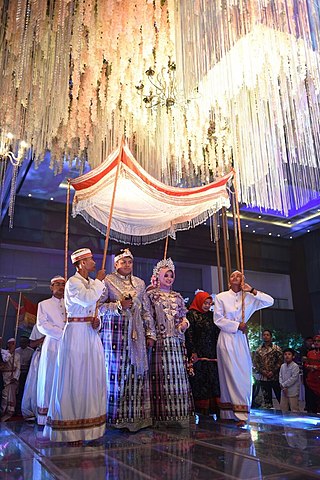
The Bugis people, also known as Buginese, are an ethnicity—the most numerous of the three major linguistic and ethnic groups of South Sulawesi, in the south-western province of Sulawesi, third-largest island of Indonesia. The Bugis in 1605 converted to Islam from Animism. The main religion embraced by the Bugis is Islam, with a small minority adhering to Christianity or a pre-Islamic indigenous belief called Tolotang.
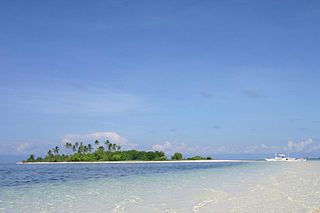
Maritime Southeast Asia comprises the countries of Brunei, Indonesia, Malaysia, the Philippines, Singapore, and East Timor. Maritime Southeast Asia is sometimes also referred to as Island Southeast Asia, Insular Southeast Asia or Oceanic Southeast Asia. The 16th-century term "East Indies" and the later 19th-century term "Malay Archipelago" are also used to refer to Maritime Southeast Asia.

The National Museum of Indonesia is an archeological, historical, ethnological, and geographical museum located in Jalan Medan Merdeka Barat, Central Jakarta, right on the west side of Merdeka Square. Popularly known as the Elephant Museum after the elephant statue in its forecourt, its broad collections cover all of Indonesia's territory and almost all of its history. The museum has endeavoured to preserve Indonesia's heritage for two centuries.

Prehistoric Indonesia is a prehistoric period in the Indonesian archipelago that spanned from the Pleistocene period to about the 4th century CE when the Kutai people produced the earliest known stone inscriptions in Indonesia. Unlike the clear distinction between prehistoric and historical periods in Europe and the Middle East, the division is muddled in Indonesia. This is mostly because Indonesia's geographical conditions as a vast archipelago caused some parts — especially the interiors of distant islands — to be virtually isolated from the rest of the world. West Java and coastal Eastern Borneo, for example, began their historical periods in the early 4th century, but megalithic culture still flourished and script was unknown in the rest of Indonesia, including in Nias, Batak, and Toraja. The Papuans on the Indonesian part of New Guinea island lived virtually in the Stone Age until their first contacts with modern world in the early 20th century. Even today living megalithic traditions still can be found on the island of Sumba and Nias.

Rumah adat are traditional houses built in any of the vernacular architecture styles of Indonesia, collectively belonging to the Austronesian architecture. The traditional houses and settlements of the several hundreds ethnic groups of Indonesia are extremely varied and all have their own specific history. It is the Indonesian variants of the whole Austronesian architecture found all over places where Austronesian people inhabited from the Pacific to Madagascar each having their own history, culture and style.

The national costume of Indonesia is the national costume that represents the Republic of Indonesia. It is derived from Indonesian culture and Indonesian traditional textile traditions. Today the most widely recognized Indonesian national costumes include batik and kebaya, although originally those costumes mainly belong within the island of Java and Bali, most prominently within Javanese, Sundanese and Balinese culture. Since Java has been the political and population center of Indonesia, folk costume from the island has become elevated into national status.

The Sumba people are an ethnic group inhabiting Sumba Island in Indonesia, which is divided by four regencies, namely the Southwest Sumba Regency, West Sumba Regency, East Sumba Regency, and the East Sumba Regency. They refer to themselves as Tau Humba. The Sumbese have been able to retain much of their culture despite foreign influences that arrived long ago on the Lesser Sunda Islands.

It is quite difficult to define Indonesian art, since the country is immensely diverse. The sprawling archipelago nation consists of 17.000 islands. Around 922 of those permanently inhabited, by over 1,300 ethnic groups, which speak more than 700 living languages.
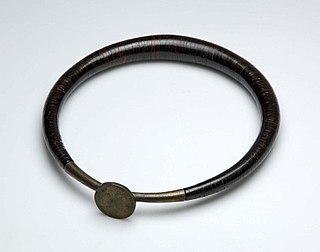
Kalabubu, sometimes spelled Kala bubu, is a torc worn by warriors of the people of South Nias of North Sumatra, Indonesia. Kalabubu symbolizes triumph in warfare and heroism. Wearing a kalabubu was believed to protect the wearer from harm. Kalabubu is popularly known as the "headhunter's necklace"; historically only those who already decapitated the head of the enemy tribes are allowed to wear the kalabubu.
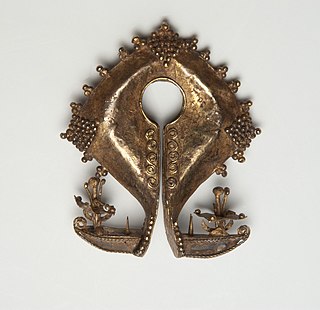
Mamuli are precious metal ornaments of the Sumba people, Sumba, Indonesia. They are found in the megalithic society of the western Sumba people, e.g. the Anakalang society. The mamuli ornaments have a shape which represents the female genitalia, symbolizing the woman as the giver of life. Mamuli are the most important Sumbanese precious metal valuables and are seen as heirloom objects which served in important exchange rituals.
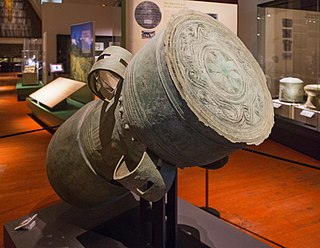
Pejeng drum is a type of Bronze Age kettledrum which was produced across the archipelago of Indonesia between the 1st and 2nd century AD. They are one of Indonesia's finest example of metalworking. Examples of Bronze Age Pejeng drum, such as the ancient Moon of Pejeng, is the largest bronze drum in the world, indicating the advance of metal casting technique and the active trade in the archipelago in the first millennium AD.
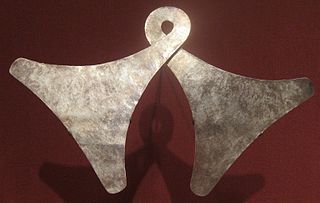
Marangga are precious metal valuable of the Sumba people of Sumba Island, Indonesia. They are found in the megalithic culture of the western Sumba people, e.g. the Anakalang society. They have the shape of a twisted metal sheet with a broadened end that has the shape of an axe. The marangga of Sumba is worn hung to the neck as a pendant, forming a kind of chest plate.
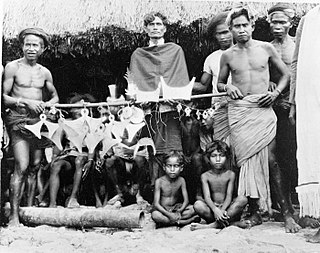
Madaka, also written as mendaka, is a type of precious metal valuable to the Sumba people of Sumba Island, Indonesia. It is found in the megalithic culture of the western Sumba people, e.g. the tribe of Anakalang. Of all precious metal valuable to Sumba people, the madaka is considered to be the most sacred type of gold heirloom.

Tenun is an artful Indonesian technique of making a fabric by weaving different colours of threads. Tenun belongs to one of the typical Indonesian cultural arts produced by hand skills using traditional looms. The word Tenun itself has a high meaning, historical value, and technique in terms of colors, motifs, and types of materials and threads used and each region has its own characteristics. In addition, Tenun is also one of Indonesia's original cultural heritages that is still maintained and preserved to this day.
